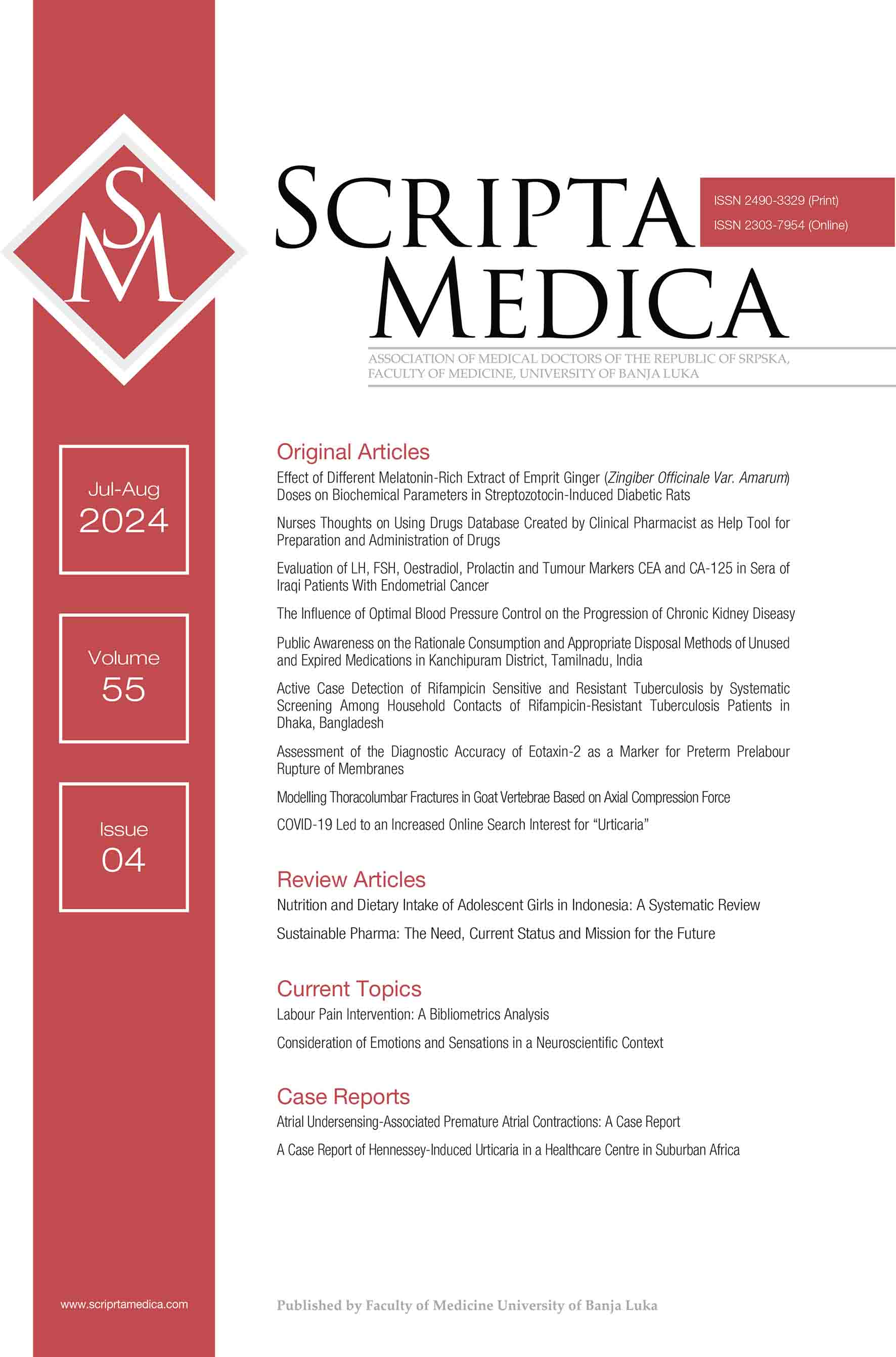A Case Report of Hennessey-Induced Urticaria in a Healthcare Centre in Suburban Africa
Sažetak
This case report explores the unprecedented manifestation of generalised urticaria consistently affecting specific body surfaces in a 25-year-old female patient following Hennessy consumption. The patient's medical history aligns with existing literature implicating alcohol as a potential trigger for urticarial symptoms. While the pathogenesis of mast cell activation due to alcohol remains elusive, presented findings contribute to the growing body of knowledge. The case underscores the importance of recognising alcohol as a potential aetiological factor for urticaria. This unique presentation of generalised urticaria prompts clinicians to consider alcohol-induced urticaria in their differential diagnosis. This case report contributes to the evolving understanding of urticaria pathogenesis, urging continued exploration into the complex relationship between alcohol consumption and urticarial pathogenesis.
Reference
Zuberbier T, Aberer W, Asero R, Abdul Latiff AH, Baker D, Ballmer-Weber B, et al. The EAACI/GA²LEN/EDF/WAO guideline for the definition, classification, diagnosis and management of urticaria. Allergy. 2018 Jul;73(7):1393-414. doi: 10.1111/all.13397.
García-Gavín J, Lissens R, Timmermans A, Goossens A. Allergic contact dermatitis caused by isopropyl alcohol: a missed allergen? Contact Dermatitis. 2011 Aug;65(2):101-6. doi: 10.1111/j.1600-0536.2011.01936.x.
Pradalier A, Artigou C, Dry J. Alcool et urticaire [Alcohol and urticaria]. Ann Med Interne (Paris). 1985;136(3):216-8. French. PMID: 4026109.
Nakagawa Y, Sumikawa Y, Nakamura T, Itami S, Katayama I, Aoki T. Urticarial reaction caused by ethanol. Allergol Int. 2006 Dec;55(4):411-4. doi: 10.2332/allergolint.55.411.
Hadjieconomou S, Mughal A. Segmental urticaria triggered by alcohol consumption. JAAD Case Rep. 2020 Jan 30;6(2):144-5. doi: 10.1016/j.jdcr.2019.11.013.
- Authors retain copyright and grant the journal right of first publication with the work simultaneously licensed under a Creative Commons Attribution License that allows others to share the work with an acknowledgement of the work's authorship and initial publication in this journal.
- Authors are able to enter into separate, additional contractual arrangements for the non-exclusive distribution of the journal's published version of the work (e.g., post it to an institutional repository or publish it in a book), with an acknowledgement of its initial publication in this journal.
- Authors are permitted and encouraged to post their work online (e.g., in institutional repositories or on their website) prior to and during the submission process, as it can lead to productive exchanges, as well as earlier and greater citation of published work (See The Effect of Open Access).

